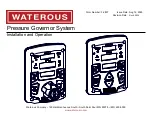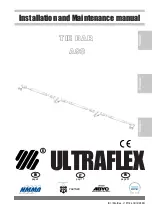
Operational
Storage
Transport
Temperature
+18º to +30º C
(+64.4°F to +86°F)
-10º to +50º C
(+14°F to +122°F)
-10º to +50º C
(+14°F to +122°F)
Humidity
30% to 75% RH non-
condensing
10% to 85% RH non-
condensing
10% to 85% RH non-
condensing
Pressure
700hPa (3000m) to
1060hPa
700hPa (3000m) to
1060hPa
700hPa (3000m) to
1060hPa
5.2.1 Cleaning and Disinfection of Probes
Note
This chapter is equivalent to Addendum 5661328.
Probe Care Cards
The Probe Care Card contains a list of chemicals that have been tested for compatibility with
GE Ultrasound probes. The reprocessing instructions provided in this document have been
validated with the chemicals specified in 'Chemicals Used for Efficacy Validation'
. The Probe Care Card is supplied with every probe and can also be downloaded from:
Support Documentation Library Web Site:
http://www3.gehealthcare.com/en/Support/Support_Documentation_Library
Ultrasound Probe Web Site
http://www.gehealthcare.com/transducers
Table 5-1 Documentation and Probe Web Links
Adequate cleaning and disinfection between patient cases are necessary to prevent disease
transmission. All probes must be thoroughly cleaned prior to disinfection. The level of
disinfection required is based on patient contact.
•
To verify probe chemical compatibility, a full list of chemicals tested is available at the
GE Probe website shown above.
•
Probes that contact mucosal or non-intact skin require cleaning followed by high-level
disinfection by either soaking or use of a trophon EPR and trophon2.
•
Probes that contact intact skin require cleaning followed by intermediate-level
disinfection (wipe or spray).
Probe Pre-Treatment at the Point of Use (Required for All Probes)
The pre-treatment step is for removal of gel and gross contamination.
1.
After each use, remove protective sheath from the probe and remove the coupling gel by
wiping from the strain relief to the lens with a soft, low-lint cloth.
Caution
DO NOT use abrasive paper products when cleaning or wiping a GE Ultrasound probe. The
use of abrasive wipes can damage the soft lens (acoustic window). To extend the life of the
probe lens, pat dry only.
2.
Wipe the cable with one of the wipes listed in the probe compatibility website from the
strain relief to the connector. Wipe the cable with a low-lint cloth dampened with potable
water to remove chemical residue. Dispose of the cloth, wipe and gloves in the clinical
trash.
Probes and Biopsies
Voluson™ SWIFT / Voluson SWIFT+ Instructions For Use
5831612-100 Revision 4
5-7
Содержание Voluson Swift
Страница 343: ......
















































